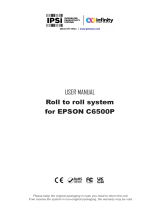9.7 Device Settings .............................................................. 65
9.7.1 Print Job ........................................................... 65
9.7.2 Print Control ...................................................... 67
9.7.3 User Environment ............................................. 67
9.7.4 General Parameters ......................................... 67
9.8 I/O Parameters ............................................................... 68
9.8.1 I/O Port Parameter 1-8 ..................................... 68
9.8.2 I/O Port Parameter 9-16 ................................... 68
9.8.3 General Parameters ......................................... 68
9.9 Ribbon Saving / Foil Saving ........................................... 70
9.10 Ribbon Saving STANDARD (Continuous Mode) ........... 71
9.10.1 Required Parameters ....................................... 71
9.10.2 Print Performance Information ......................... 73
9.10.3 Expert Parameters ............................................ 73
9.10.4 General Parameters ......................................... 75
9.11 Ribbon Saving SHIFT (Continuous Mode) .................... 75
9.11.1 Required Parameters ....................................... 75
9.11.2 Ribbon Saving SHIFT Parameters ................... 77
9.11.3 Expert Parameters ............................................ 79
9.11.4 General Parameters ......................................... 80
9.12 Ribbon Saving SAVESTRT (Continuous Mode) ............ 81
9.12.1 Required Parameters ....................................... 81
9.12.2 Expert Parameters ............................................ 82
9.12.3 General Parameters ......................................... 84
9.13 Ribbon Saving STANDARD (Intermittent Mode ............ 85
9.13.1 Required Parameters ....................................... 85
9.13.2 Expert Parameters ............................................ 86
9.13.3 General Parameters ......................................... 86
9.14 Ribbon Saving SHIFT (Intermittent Mode) .................... 87
9.14.1 Required Parameters ....................................... 87
9.14.2 Ribbon Saving SHIFT Parameters ................... 88
9.14.3 Expert Parameters ............................................ 91
9.14.4 General Parameters ......................................... 91
9.15 Network .......................................................................... 92
9.16 Interface ......................................................................... 93
9.16.1 COM1 ............................................................... 93
9.16.2 General Parameters ......................................... 93
9.17 Emulation ....................................................................... 94
9.18 Date/Time ...................................................................... 95
9.18.1 Daylight Saving Time (DST) ............................. 95
9.18.2 Start Daylight Saving Time ............................... 95
9.18.3 End Daylight Saving Time ................................ 95
9.18.4 General Parameters ......................................... 95
9.19 Service Functions .......................................................... 96
9.19.1 Sensor Status ................................................... 96
9.19.2 Device Status ................................................... 97




















